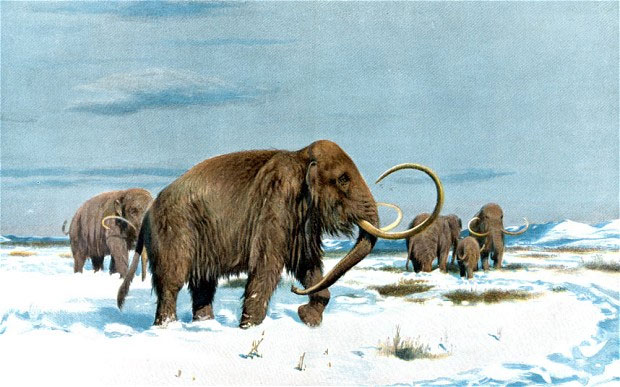More hope to revive mammoths
The idea of mammoth replication comes closer to reality when scientists discover that some parts of mammoths are well preserved in ice in Siberia in Russia and that they may contain living cells.
>>>Korea and Russia study duplication of mammoths
Russia's Northeastern Federal University announced that a group of international researchers have found mammoth's hair, soft cells and bone marrow at a depth of 100 meters below the ground during a summer expedition in the plus country. Sakha Air in Russia, AP said.

Illustration of a prehistoric mammoth.
Semyon Grigoryev, head of the search team, said Korean scientists joined the expedition with the goal of finding living cells to realize the ability to duplicate mammoths. Previously, scientists had found bones and body parts of mammoths, but they did not contain living cells.
'Only after thorough research in the laboratory does we know if the body parts contain living cells. The research process will last at least from now until the end of the year , " Grigoryev said.
Scientists believe long-haired mammoths have become extinct since about 10,000 years ago, but some argue that a small group of mammoths persisted for a while in Alaska and Wrangel Island off Siberia.
Researchers have deciphered many genes from mammoth feathers they found in the permafrost in Siberia. Some people believe that they can replicate this prehistoric animal if they find well-preserved living cells.
- Can revive mammoths
- Why does science have to spend tens of years just to revive mammoths?
- Restoring mammoths from corpses
- Why need to revive the mammoth
- What will the world be like if dinosaurs and mammoths revive?
- Mammoths can be 'revived'
- Reviving mammoths
- Prehistoric mammoths are about to revive in 'Jurassic Park' in Russia?
- What do scientists do to revive dinosaurs?
- Can still revive the dead
- Resurrection of mammoths is at hand
- Excavation of 10,000 year old mammoth bones
 Animal 'suffering' after hibernation
Animal 'suffering' after hibernation Why do goats climb well?
Why do goats climb well? Scientists were surprised to see chimpanzees eating turtles
Scientists were surprised to see chimpanzees eating turtles Giant catfish died deadly due to drought in Thailand
Giant catfish died deadly due to drought in Thailand